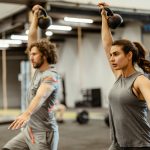Maintaining strong bones is essential for overall health and longevity, especially as we age. Our skeletal system provides structure, protects our organs, anchors muscles, and stores calcium. Osteoporosis, characterized by brittle and fragile bones, is a significant health concern, particularly for older adults. However, it's never too late to start caring for your bones. Incorporating specific exercises into your routine can significantly improve your bone density, reduce the risk of fractures, and enhance your quality of life.
The Importance of Strong Bones
Bone health is critical for several reasons. Strong bones support our body's structure and enable us to move freely. They protect our internal organs and serve as a storage area for vital minerals, such as calcium and phosphorus. When bone health deteriorates, it can lead to conditions such as osteoporosis, which increases the risk of fractures and can severely impact mobility and independence.
Understanding Bone Density
Bone density refers to the amount of bone mineral in bone tissue. Higher bone density generally indicates stronger bones, while lower bone density is a sign of weakened bones and a higher risk of fractures. Bone density peaks in our late twenties and gradually declines with age. However, lifestyle choices, including diet and exercise, play a significant role in maintaining bone density throughout life.
Effective Exercises for Bone Health
Various types of exercises can help improve bone density and strength. These fall into three main categories: weight-bearing aerobic activities, strength training, and flexibility exercises.
Weight-Bearing Aerobic Activities
Weight-bearing aerobic activities involve exercises that involve moving against gravity while staying upright. These exercises are beneficial for increasing bone density in the lower spine, hips, and legs.
Walking
Walking is one of the simplest and most effective weight-bearing exercises. It’s accessible to almost everyone and can be done anywhere. Regular walking can help maintain bone density and improve overall cardiovascular health.
Dancing
Dancing combines the benefits of weight-bearing activity with enjoyment and social interaction. Whether it’s salsa, ballroom, or even a casual dance at home, this activity puts your bones to work, strengthening them over time.
Stair Climbing
Using stairs instead of elevators or escalators is an excellent way to incorporate weight-bearing exercise into your daily routine. Stair climbing works the muscles and bones in your legs and hips, promoting bone health.
This comprehensive resource from the Mayo Clinic provides more detailed guidance on the benefits of weight-bearing aerobic activities.
Strength Training
Strength training involves resistance exercises to stimulate muscle contraction and strengthen bones. Weights, resistance bands, or one's own body weight are standard methods of strength training.
Resistance Bands
Resistance bands are a versatile tool for strength training. They come in various resistance levels, making them suitable for all fitness levels. Exercises using resistance bands can be done standing or seated, making them accessible to those with limited mobility.
Free Weights
Free weights, such as dumbbells, can significantly improve bone density, especially in the upper body. Start with lighter weights and gradually increase the load as your strength improves. Focus on exercises like bicep curls, tricep extensions, and shoulder presses.
Body Weight Exercises
Pushups, squats, and lunges are excellent examples of body-weight exercises that can enhance bone density. These exercises can be modified to match your fitness level and can be done anywhere without equipment.
Flexibility Exercises
Maintaining flexibility is essential for overall bone health. Flexibility exercises help keep your muscles and joints supple, reducing the risk of injuries and falls.
Stretching
Regular stretching exercises can help maintain the range of motion in your joints. It’s best to stretch after a workout when your muscles are warm. Stretch gently and avoid bouncing to prevent injury.
Yoga
Yoga is a widespread practice that combines flexibility, strength, and balance training. It has been shown to affect bone density, particularly in postmenopausal women positively. Different yoga poses put gentle stress on bones, encouraging them to strengthen and become denser. For a deeper dive into how yoga benefits bone density,
Balancing Exercise Regimens
While aerobic and strength training exercises are crucial, it’s also essential to incorporate balance exercises into your routine. Improved balance reduces the risk of falls, which is particularly important for individuals with osteoporosis.
Tai Chi
Tai Chi is a traditional Chinese martial art known for its slow and deliberate movements. It’s excellent for improving balance and coordination, making it a beneficial practice for preventing falls and fractures.
Balance Drills
Simple balance drills, such as standing on one leg or walking heel-to-toe, can significantly enhance stability. These exercises can be easily incorporated into your daily routine and adjusted based on your fitness level.
Starting an Exercise Program
If you’re new to exercising or returning after a long hiatus, it’s essential to start slowly and gradually increasing your workouts' intensity. Here are some tips to help you get started safely and effectively:
Consult a Professional
Before beginning any exercise program, especially if you have existing health conditions or concerns about bone health, it’s advisable to consult with a healthcare provider or a physical therapist. They can help tailor a program to your needs and ensure you’re doing the exercises correctly.
Set Realistic Goals
Set achievable goals to keep yourself motivated. Start with short sessions and gradually increase the duration and intensity as your fitness improves. Celebrate small milestones to stay encouraged.
Focus on Proper Form
Proper form is crucial to preventing injuries and getting the most out of your workouts. Consider working with a personal trainer or taking a few classes to learn the correct techniques.
Listen to Your Body
Pay attention to how your body feels during and after exercise. If you experience pain, dizziness, or discomfort, stop and seek advice from a professional. It’s essential to challenge yourself, but never at the expense of your safety.
Nutrition and Bone Health
Exercise is vital to maintaining bone health, but it’s equally important to support your bones with proper nutrition. Certain nutrients, including calcium, vitamin D, and magnesium, are essential for bone health.
Calcium
Calcium is the primary mineral found in bones and is crucial for strength and structure. Dairy products, leafy greens, and fortified foods are excellent sources of calcium. If you find getting enough calcium from your diet challenging, consider taking calcium supplements, but consult your healthcare provider first.
Vitamin D
Vitamin D helps the body absorb calcium. Sunlight is a natural source of vitamin D, but it can also be obtained through certain foods and supplements. Fatty fish, fortified milk, and egg yolks are good dietary sources of vitamin D.
Magnesium
Magnesium regulates calcium transportation and absorption, which is important for bone formation. Nuts, seeds, whole grains, and green leafy vegetables are rich in magnesium.
Balanced Diet
A balanced diet that includes a variety of nutrients is essential for overall health and bone strength. Ensuring enough protein, fruits, and vegetables will support your bones and well-being.
For more information on bone-strengthening nutrition, visit Women's Health Network.
Lifestyle Factors Affecting Bone Health
Beyond exercise and nutrition, other lifestyle factors can influence bone health. Addressing these aspects can further protect and enhance your bone density.
Avoid Smoking
Smoking harms bone health by interfering with the body’s calcium absorption, leading to decreased bone density. Quitting smoking is one of the best things you can do for your bones and overall health.
Limit Alcohol Consumption
Excessive alcohol consumption can weaken bones and increase the risk of fractures. Moderation is vital; limit yourself to no more than one drink per day for women and two for men.
Maintain a Healthy Weight
Being underweight increases the risk of bone loss and fractures while being overweight stresses bones and joints. Aim for a healthy weight through a balanced diet and regular exercise.
Fall Prevention
Preventing falls is crucial, especially for individuals with osteoporosis. Remove tripping hazards from your home, install grab bars in the bathroom, and ensure good lighting throughout your living areas.
Conclusion
Building and maintaining strong bones requires a multifaceted approach that includes regular exercise, a nutrient-rich diet, and healthy lifestyle choices. Starting an exercise routine incorporating weight-bearing, strength training, and flexibility exercises can significantly improve bone density and reduce the risk of osteoporosis-related fractures. Consult healthcare professionals to tailor a program that suits your needs and abilities, and remember, it’s never too late to start taking care of your bones.
Check out these resources from the Mayo Clinic and the Women's Health Network for more detailed insights on exercises and tips for improving bone density.
Embrace an active lifestyle, nourish your body with the proper nutrients, and take preventive measures to keep your bones strong and healthy throughout your life.










